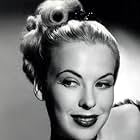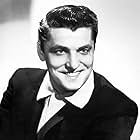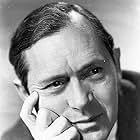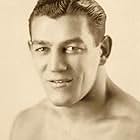NOTE IMDb
6,8/10
1,7 k
MA NOTE
Ajouter une intrigue dans votre langueAn escaped psychiatric patient causes havoc.An escaped psychiatric patient causes havoc.An escaped psychiatric patient causes havoc.
- Réalisation
- Scénario
- Casting principal
- Récompenses
- 1 nomination au total
Hal Baylor
- Lt. 'Whitey' Tallman
- (as Hal Fieberling)
Joel Allen
- Undetermined Secondary Role
- (non crédité)
John Alvin
- Television Director
- (non crédité)
Walter Bacon
- Onlooker in Crowd
- (non crédité)
Al Bain
- Onlooker in Crowd
- (non crédité)
Bill Baldwin
- Reporter
- (non crédité)
Barbara Billingsley
- Dorothy
- (non crédité)
Argentina Brunetti
- Wyckoff's Bus Seatmate
- (non crédité)
Avis à la une
The film follows a disturbed young man who kills without remorse. It is surprisingly disturbing considering the period in which it was filmed. After killing a bus driver, the baby faced young man seeks refuge in a bar and holds its patrons hostage. All he wants is to see the psychiatrist who committed him three years before. The film is notable for its stark and unflinching portrayal of someone completely unable to feel remorse. The film is also notable as it was one of the first movies put out by MGM under new management which turned the company away from solely making big budget events. This B-movie thriller marked a new territory for MGM. It is well-worth watching - IF you can find it!
Dial 1119 is directed by Gerald Mayer and collectively written by Hugh King, Don McGuire and John Monks Junior. It stars Marshall Thompson, Virginia Field, Andrea King, William Conrad and Sam Levine. Music is by Andre Previn and cinematography by Paul C. Vogel.
The Killing Hour.
A compact suspenser, Dial 1119 can be seen as very much a prototype of future thrillers where a hostage situation takes place. Here the story basically sees Thompson as escaped mental patient Gunther Wyckoff, who takes a bus to Terminal City, grabs hold of a gun and holes up in a bar with a small group of hostages. His aim is to reap revenge on the doctor who spared him the electric chair and had him committed instead.
In the bar is the barman, the busboy who is an expectant father, a barfly broad, a Lothario and the young lady he had coerced into having a fling with him. As tensions rise in the bar, outside the crowd gathers and so does the press, who sensationalise the situation. The cops scratch around for a solution, one of which seems to be kill Wyckoff at any cost! The narrative has caustic observations on these outside parties, while it also brings into play the delusions of the troubled Wyckoff who believes he is a war torn ex squaddie. The film doesn't shy away from violence either, there will be blood, as it were.
It's acted and directed commendably and Vogel's black and white photography is crisp and perfectly in keeping with the tone of the picture. All in all it's a good and suspenseful way to spend 75 minutes. 7/10
The Killing Hour.
A compact suspenser, Dial 1119 can be seen as very much a prototype of future thrillers where a hostage situation takes place. Here the story basically sees Thompson as escaped mental patient Gunther Wyckoff, who takes a bus to Terminal City, grabs hold of a gun and holes up in a bar with a small group of hostages. His aim is to reap revenge on the doctor who spared him the electric chair and had him committed instead.
In the bar is the barman, the busboy who is an expectant father, a barfly broad, a Lothario and the young lady he had coerced into having a fling with him. As tensions rise in the bar, outside the crowd gathers and so does the press, who sensationalise the situation. The cops scratch around for a solution, one of which seems to be kill Wyckoff at any cost! The narrative has caustic observations on these outside parties, while it also brings into play the delusions of the troubled Wyckoff who believes he is a war torn ex squaddie. The film doesn't shy away from violence either, there will be blood, as it were.
It's acted and directed commendably and Vogel's black and white photography is crisp and perfectly in keeping with the tone of the picture. All in all it's a good and suspenseful way to spend 75 minutes. 7/10
Dial 1119 (1950)
The simple premise here is transcended by gritty, real acting and some nice filming and editing to make a great minor movie. At the start, a psychotic killer is loose, and he is looking for the shrink that once put him in the mental ward. But when he gets to the town where the doctor lives, things go wrong, and he ends up with a set of hostages in a second story bar. Police arrive and surround him, and the standoff begins.
What happens next is partly formula, as each of the hostages has some kind of encounter with the man, either in trying to talk him out of things, or make a phone call for help, or eventually physically attack. There is a shadow of that more famous precursor, "The Petrified Forest," but with none of the literate and romantic elegance of the hostages or the archetypal hype of the criminals. This is more of the gritty truth of what it might actually be like.
Outside the bar, as the townspeople gather and the police strategize, it's a believable situation as well. It's night on the street, and the doctor is found but no one will let him go in and negotiate because the cops have their preferred methods which are tried, one by one, without success. There's a slight feeling of those crowds who were watching Henry Fonda trapped in his upper story room in "The Long Night" (1947), though in this one the crowds are not at all sympathetic. Eventually the doctor takes a chance and goes in to talk to the criminal in what is now an established profession of crisis negotiator.
One fascinating aspect here, for 1950 especially, is the role of live television. A portable "on the spot" t.v. truck arrives and sets up in the street (with more than one camera). And in the bar there is a large screen (yes, very large) television that the criminal turns on for awhile. This allows him to see what is happening outside the bar, and so we get to see both sides of the situation at the same time. While television had been used many times in movies before, it was perhaps never quite so visually integral to the events as here. The technology that is implied for this kind of very large device isn't clear (they mention something in the movie which doesn't explain it, really, but which makes clear they know it's unusual for the time).
There are several excellent (and familiar) actors in this tightly woven plot. The lead (the killer) played by Marshall Thompson is unfamiliar to me, and might be a weaker link--he plays the steely-faced desperado a little too straight (not that we needed Richard Widmark, that's an idea!). The cop side of things is very routine, but there are some nice twists to their progress. In all, well made and mildly suspenseful, and fast enough to never let you down.
The simple premise here is transcended by gritty, real acting and some nice filming and editing to make a great minor movie. At the start, a psychotic killer is loose, and he is looking for the shrink that once put him in the mental ward. But when he gets to the town where the doctor lives, things go wrong, and he ends up with a set of hostages in a second story bar. Police arrive and surround him, and the standoff begins.
What happens next is partly formula, as each of the hostages has some kind of encounter with the man, either in trying to talk him out of things, or make a phone call for help, or eventually physically attack. There is a shadow of that more famous precursor, "The Petrified Forest," but with none of the literate and romantic elegance of the hostages or the archetypal hype of the criminals. This is more of the gritty truth of what it might actually be like.
Outside the bar, as the townspeople gather and the police strategize, it's a believable situation as well. It's night on the street, and the doctor is found but no one will let him go in and negotiate because the cops have their preferred methods which are tried, one by one, without success. There's a slight feeling of those crowds who were watching Henry Fonda trapped in his upper story room in "The Long Night" (1947), though in this one the crowds are not at all sympathetic. Eventually the doctor takes a chance and goes in to talk to the criminal in what is now an established profession of crisis negotiator.
One fascinating aspect here, for 1950 especially, is the role of live television. A portable "on the spot" t.v. truck arrives and sets up in the street (with more than one camera). And in the bar there is a large screen (yes, very large) television that the criminal turns on for awhile. This allows him to see what is happening outside the bar, and so we get to see both sides of the situation at the same time. While television had been used many times in movies before, it was perhaps never quite so visually integral to the events as here. The technology that is implied for this kind of very large device isn't clear (they mention something in the movie which doesn't explain it, really, but which makes clear they know it's unusual for the time).
There are several excellent (and familiar) actors in this tightly woven plot. The lead (the killer) played by Marshall Thompson is unfamiliar to me, and might be a weaker link--he plays the steely-faced desperado a little too straight (not that we needed Richard Widmark, that's an idea!). The cop side of things is very routine, but there are some nice twists to their progress. In all, well made and mildly suspenseful, and fast enough to never let you down.
An engaging film despite a thin story line involving a psycho who's taken five hostages in a down-scale local bar. In Dial 1119, as in so many noir films, the locations, sets, and artifacts, are usually more interesting than the plot line. For me, the most remarkable feature of this film is the prominent TV set in the bar where most of the action takes place (the sport being watched is pro-wrestling). The bartender at one point claims it's 3 ft by 4 ft which would make it pretty large for a black and white 1950 TV anywhere. The TV though is more than a prop--it often dominates the screen and begins to take on a key role in the film when a TV reporter and camera crew from the cleverly named station WKYL arrive to cover the police rescue action, which is then seen broadcast on the bar TV. Not only is the TV now internally competing with the Motion Picture, but this must be a very early movie scene detailing TV news coverage. To make matters more interesting, one of the hostages is a disgruntled newspaper editor and so the film also depicts what will become a growing competition between TV and print journalism.
What I liked about "Dial 1119" is that it's basically ignored as an example of film noir yet, for a film made in 1950, this thing was ahead of its time. First off, there's a big-screen TV in the bar, which plays an important part in advancing the plot. The folks who made this picture also foresaw the role that TV news would come to play in taking over a story. Good cast with William ("Cannon") Conrad as Chuckles the bartender, Leon ("Mr. Ed") Ames and Marshall ("Daktari") Thompson as the central character, our friendly neighborhood psycho. Finally, you've got a love a film noir selection that takes place in Terminal City.
Le saviez-vous
- AnecdotesThe television station uses the ominous WKYL (kill) as its call letters, and the name of the town is "Terminal City".
- GaffesPerhaps a joke by the set designer, in an early scene, the dashboard of the bus shows an air conditioner control with the settings HEATING, OFF, and "MANUEL" COOLING.
- Citations
Television Announcer: And now for the benefit of the folks who tuned in late, I should like to say that this is the most traumatic spectacle I have ever had the GOOD fortune to witness
Meilleurs choix
Connectez-vous pour évaluer et suivre la liste de favoris afin de recevoir des recommandations personnalisées
- How long is Dial 1119?Alimenté par Alexa
Détails
Box-office
- Budget
- 473 000 $US (estimé)
- Durée
- 1h 15min(75 min)
- Couleur
- Rapport de forme
- 1.37 : 1
Contribuer à cette page
Suggérer une modification ou ajouter du contenu manquant




































